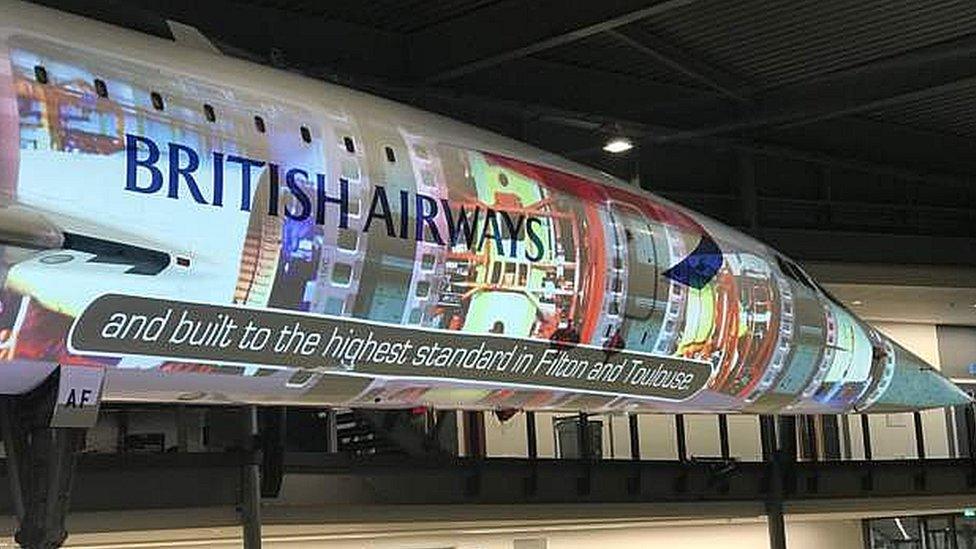Zero carbon flight 'as big a challenge as Concorde'
- Published
- comments
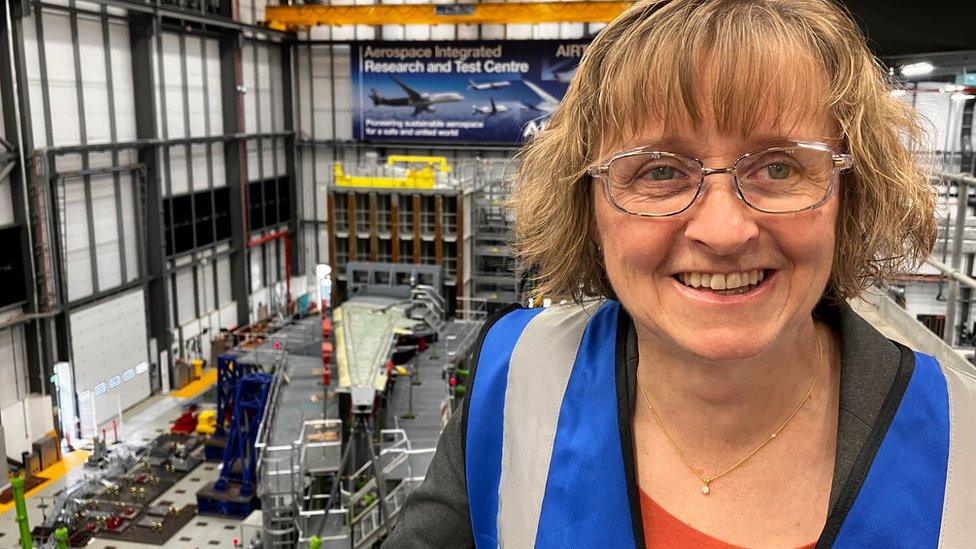
"The biggest change I've seen in my 30 year career", says Sue Partridge of Airbus Filton
The woman who runs Airbus's base near Bristol has described the challenge of taking carbon emissions out of aviation as "similar to building Concorde".
Sue Partridge runs the Wing of Tomorrow programme for the European aerospace giant.
Her team is designing wings to fly on hydrogen, with near zero emissions.
She has been at the aircraft factory, based in Filton, in the north of the city, for 34 years, but says this is "the biggest challenge" she has seen.
Concorde was designed and built in Filton, in collaboration with French engineers.
Sue Partridge said she was "very proud" of her site's heritage.
"When I started all the older engineers had all worked on Concorde, and they used to talk about 'when I worked on Concorde'."
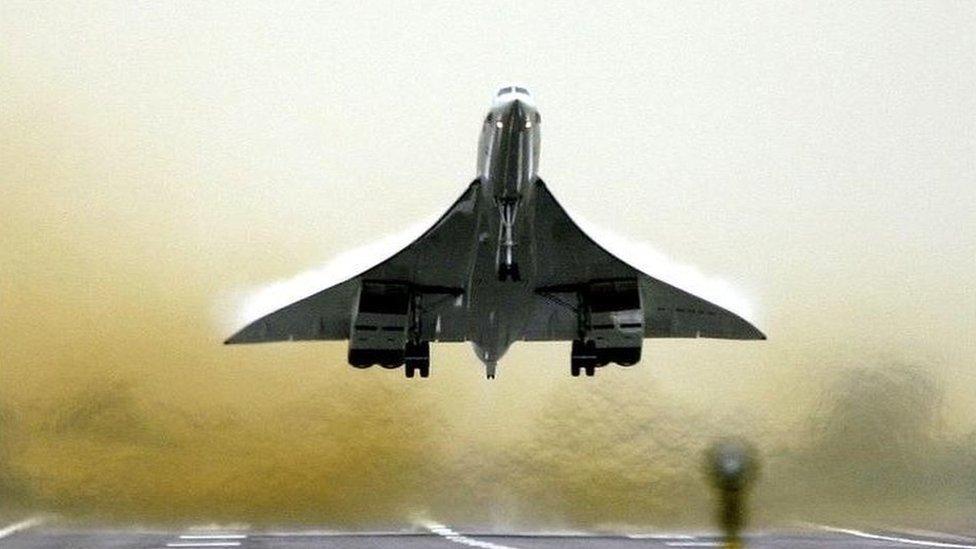
Concorde 216 made its last flight to Filton in 2003
Today, that generation has retired. It is 20 years since Concorde 216 made its last flight, landing on the Filton runway on 26 November 2003.
The new generation of engineers have a new challenge, Ms Partridge explained.
"This challenge we have to decarbonise aviation, to make aviation stop impacting our planet, is a similar size challenge to Concorde."
The supersonic aircraft was famously thirsty.
Concorde burned 20 tonnes of jet fuel an hour, nearly four times as much as a modern Airbus A350.
And because she could only carry 100 passengers, the luxury jet consumed 17 litres to carry one passenger each 62 miles (100km).
A modern Airbus will use just 2.9 litres by comparison.
Even by the standards of her times, Concorde used a lot of fuel.
It was generally acknowledged the cost of flying supersonic to New York was about three times the fuel consumption of a Boeing 747.
Today's Airbus jets owe much of their fuel efficiency to the wing designers of Filton.
"Many people don't realise how important wing design is to saving fuel," Ms Partridge explained.
"Our latest aircraft, the A321 XLR, will be 30% more efficient than the aircraft it replaces."
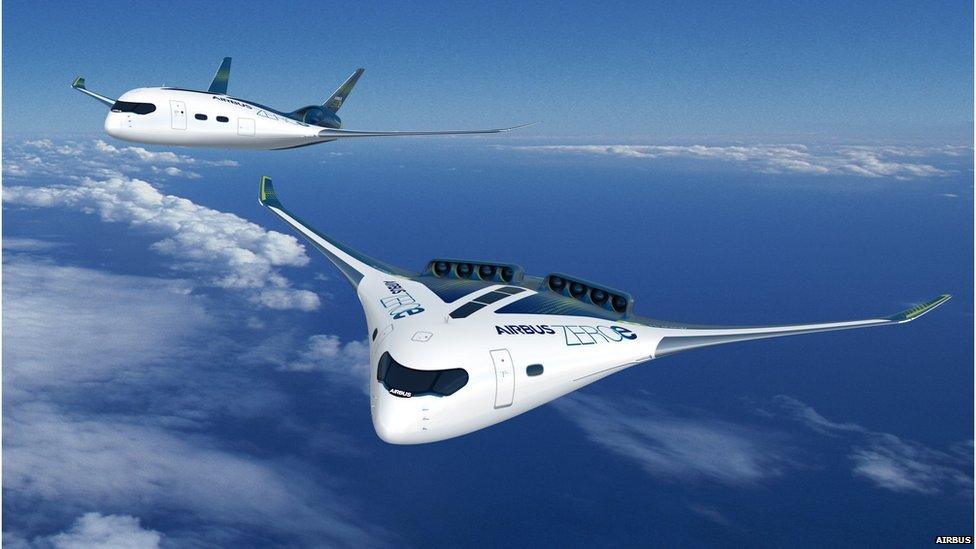
Concept aircraft designed by Airbus to run on hydrogen with near zero carbon emissions
But even efficient aircraft still use kerosene, still produce carbon dioxide and still contribute to climate change.
So now the engineers in the factory that broke the sound barrier are trying to create aircraft with "near zero" emissions.
Most will run on hydrogen, either burned directly or used in fuel cells to generate electricity on board.
The engineering challenges are huge.
"You're talking about storing cryogenic hydrogen on the aircraft at minus 250 centigrade," Ms Partridge told me.
"Managing that hydrogen, and burning it or using a fuel cell to fly without using any kerosene-based fuel whatsoever."
Airbus expects to have these aircraft in the skies "in the mid 2030s".
Aviation's critics are sceptical.
Cait Hewitt, policy director of the Aviation Environment Federation, has analysed the government's own policy documents, called "Jet Zero".

Cait Hewitt, of the Aviation Environment Federation, is sceptical about 'zero emission' flying
"Hydrogen planes are unlikely to be on long haul routes," she said.
"They're unlikely to be at a big scale. The government's forecast is that the introduction of zero emission aircraft might cut emissions from the aviation sector by 4% by 2050."
The problem is that every airport in the world will have to install new fuel tanks for compressed hydrogen, all at 250 degrees below zero.
Hydrogen will have to be made on a huge scale, near to the airports that use it, with renewable electricity.
And politicians, regulators and passengers will all need persuading that the new planes are safe, and genuinely low-emission.
Compared to this, breaking the sound barrier is starting to look simple.

Follow BBC West on Facebook, external, X, external and Instagram, external. Send your story ideas to: bristol@bbc.co.uk , external
- Published31 October 2023
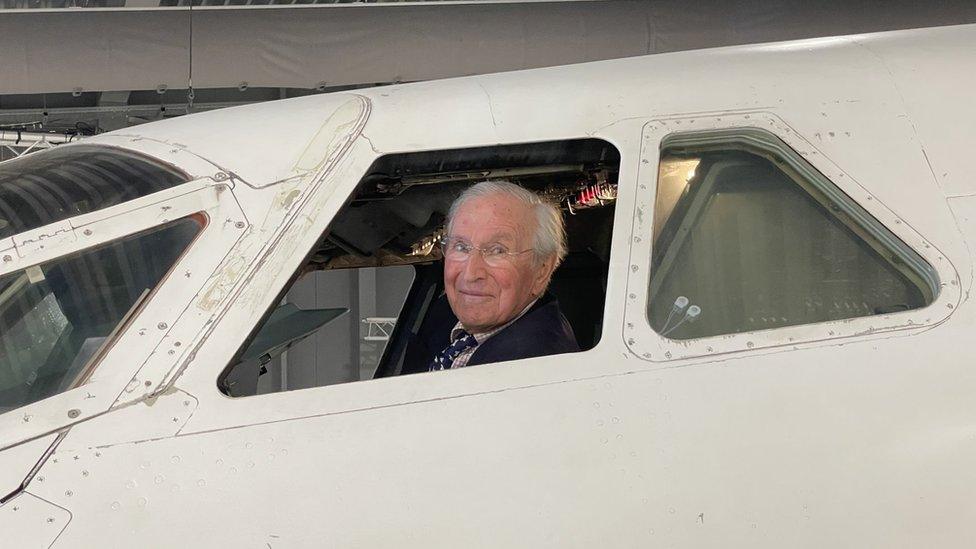
- Published16 June 2023

- Published17 October 2017
